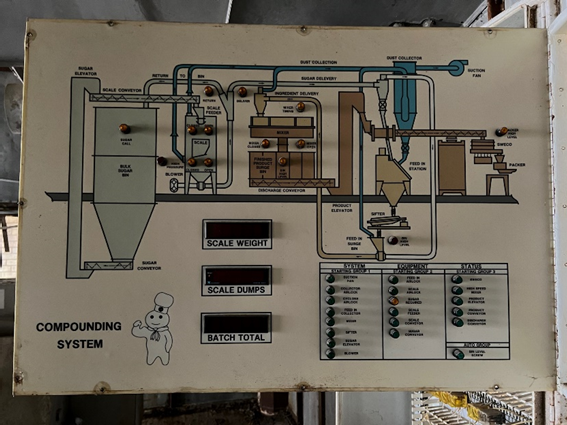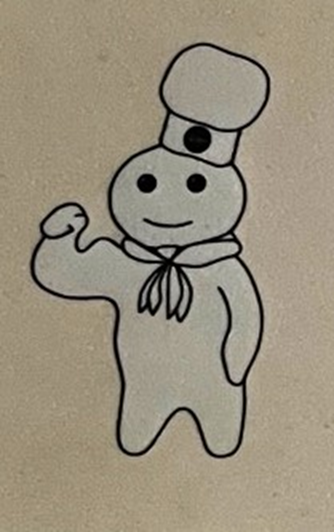How was the Pillsbury Doughboy born? New discovery conflicts with company's origin story
SPRINGFIELD, Ill. – One of the most recognizable and beloved marketing images may have gotten its start in a now-abandoned Illinois plant.
Chris Richmond, the founder and president/treasurer of Moving Pillsbury Forward, thinks he has discovered an early image of the Pillsbury Doughboy at the Springfield plant.
The image of the Doughboy flexing its muscle was found on a control panel in the bakery mix building of the 18-acre plant by Richmond in December.
Employees of the Pillsbury plant, a one-time hulking grain and flour factory that shut down in 2001 after going through various owners, have told Richmond that a plant employee left Doughboy sketches around different buildings in the late 1950s and early 1960s.

The building where Richmond found the line drawing dates back to 1949. That is significant because Pillsbury's official story of how the Poppin' Fresh Doughboy was developed dates to 1965.
Who is credited for Pillsbury Doughboy?

The company's website credits the Leo Burnett advertising agency in Chicago with coming up with the idea for the brand mascot, known for saying "Hoo! Hoo!" when its stomach is poked.
Richmond said Moving Pillsbury Forward (MPF), a registered not-for-profit corporation that secured the deed to the site nearly a year ago, has tried to reach General Mills about the image, so far to no avail.
A spokesperson from General Mills, which has owned Pillsbury since 2001, didn't immediately respond to The State Journal-Register, part of the USA TODAY Network.
"I would certainly like to know a little bit more of the history of this (found) image," Richmond said. "Of course, it's historically important if it pre-dates the ad agency's imagery from 1965. If that can be proven, it flies in the face of the Pillsbury company's story.
"We're trying to resolve that conflict through more research."
Why the discovery came as no surprise to some
That Richmond found such an image at the Springfield plant wasn't a surprise to some of its former employees.
"They told me the employee apparently put a sketch in the suggestion box at the Springfield Pillsbury plant and the story from the employees was that guy was paid a little bit of money for the idea," said Richmond, who wouldn't divulge the name of the artist. "Several years later, the ad agency got a contract to come up with something for Pillsbury and out they came with the Doughboy.
"It's a bit of a conflicting story."

Springfield plant employees were known as "Doughboys" even in the 1930s and 1940s, Richmond added. Pillsbury sponsored bowling, baseball, and softball teams touting the "Doughboy" moniker.
The bicep-flexing "Doughboy" is analogous to Rosie the Riveter, the media icon associated with female defense workers during World War II, Richmond pointed out. That sense of imagery would have been at the forefront of people's minds at the times around Springfield, he said.
Follow reporter Steven Spearie on Twitter: @StevenSpearie
This article originally appeared on State Journal-Register: Pillsbury Doughboy's General Mills origin story could be proven wrong
